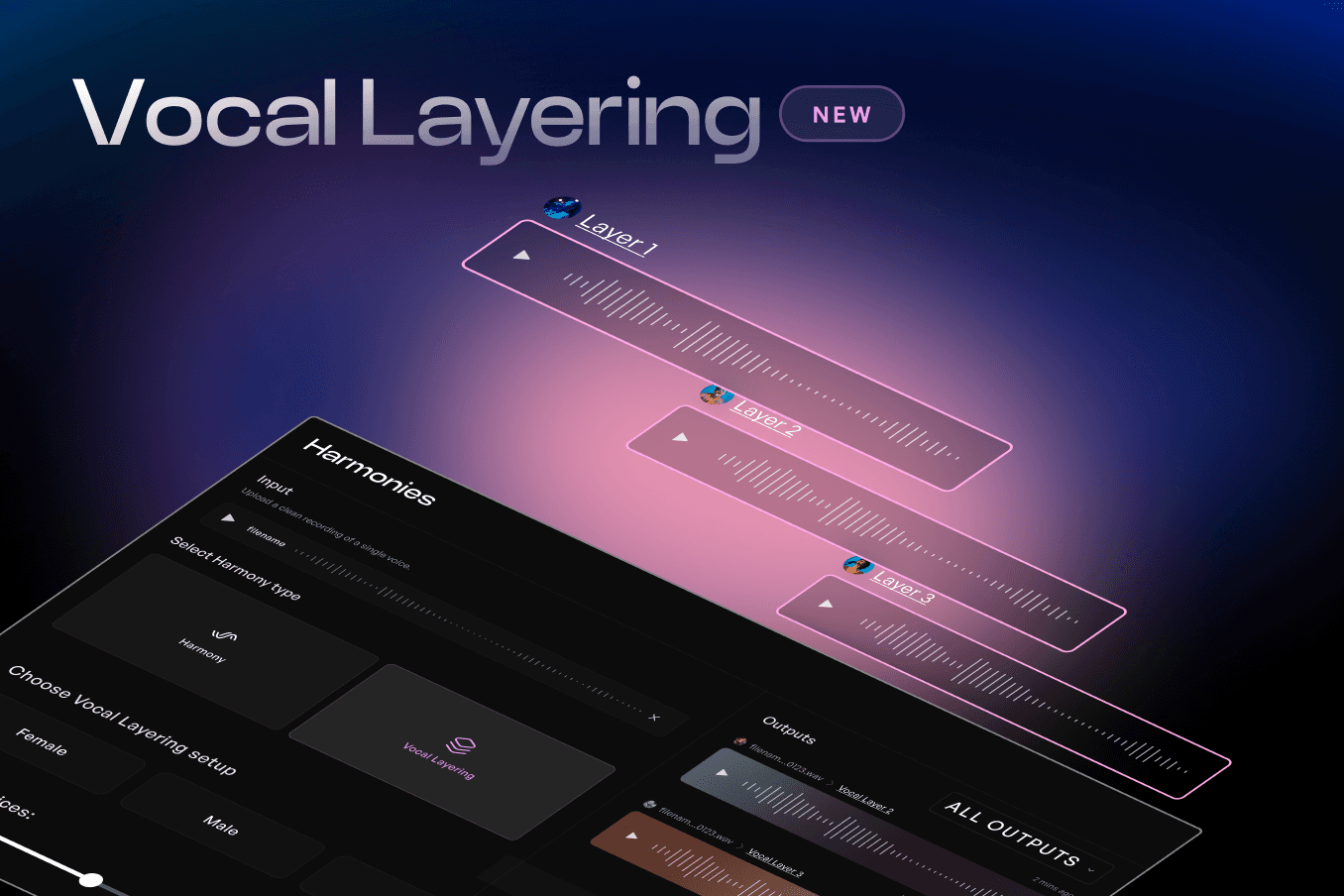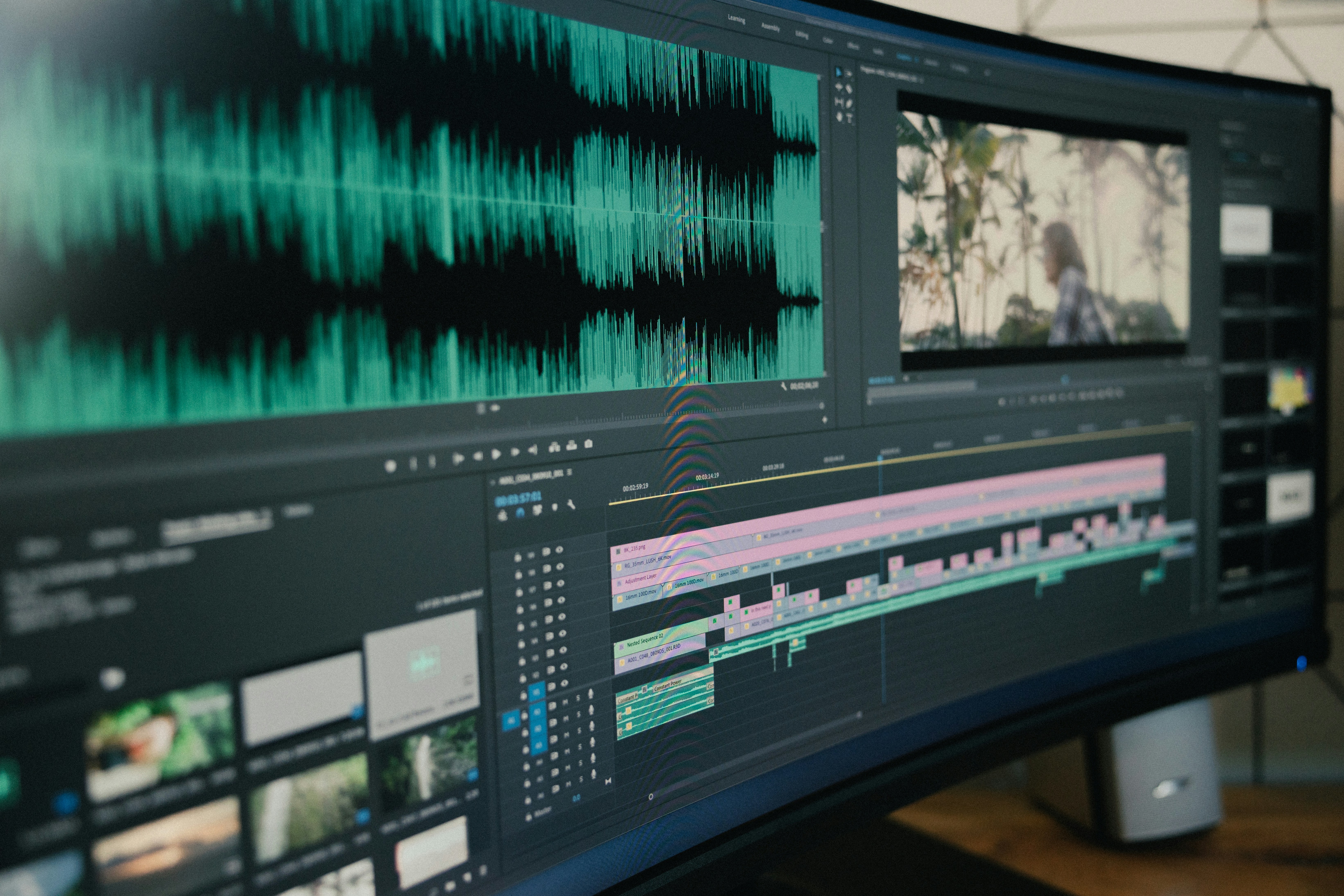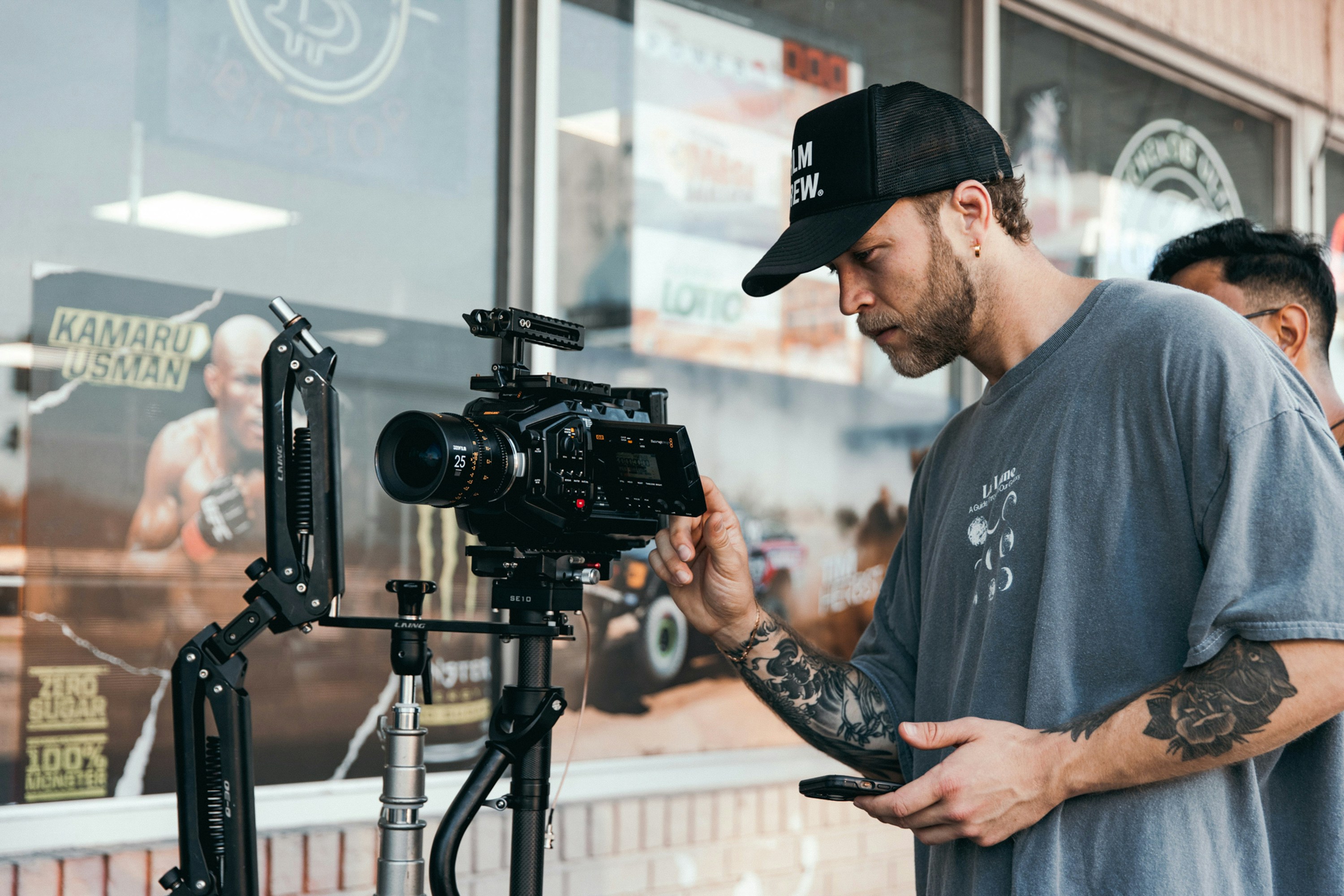How to Make Rock Music with AI Vocals
Written by
Published on
February 7, 2024
The Potential of AI in Music Production
Creating music has always been a blend of art and science. But with advancements in AI, the landscape of music production is experiencing a significant shift. Artists now have at their disposal tools like Kits AI, which offer AI voice generator toolkits to create, train, and use custom AI voices. This innovation opens up new possibilities for musicians to craft their sound, including the raw and impassioned tones characteristic of rock music.
Instead of spending time finding the perfect vocalist, or layering and processing vocals manually, AI can generate a vocal track with just a few clicks. AI-generated vocals can maintain a high level of consistency and realism, making them a practical option for musicians and producers alike.
Kits AI stands out by providing a library of royalty-free voices, which removes the barrier of expensive licensing fees and complex rights management. It's a solution that not only saves time but also democratizes the production process, allowing more creators to bring their musical visions to life without prohibitive costs.
Getting Started with Kits AI
For those eager to integrate AI vocals into their rock tracks, Kits AI serves as a perfect starting point. The platform is straightforward, allowing users to select, customize, and implement AI vocals with relative ease. The video tutorial provided is a valuable resource, guiding users through the process of converting their vocal ideas into polished AI-generated tracks.
Voice Conversion Using Kits AI
The journey to a rock anthem begins with transforming a simple vocal recording into a full-fledged AI-generated performance. Kits AI simplifies this process. The first step involves navigating to the platform and selecting the 'Convert' option. This initiates the voice conversion, laying the foundation for what will become a powerful rock vocal.
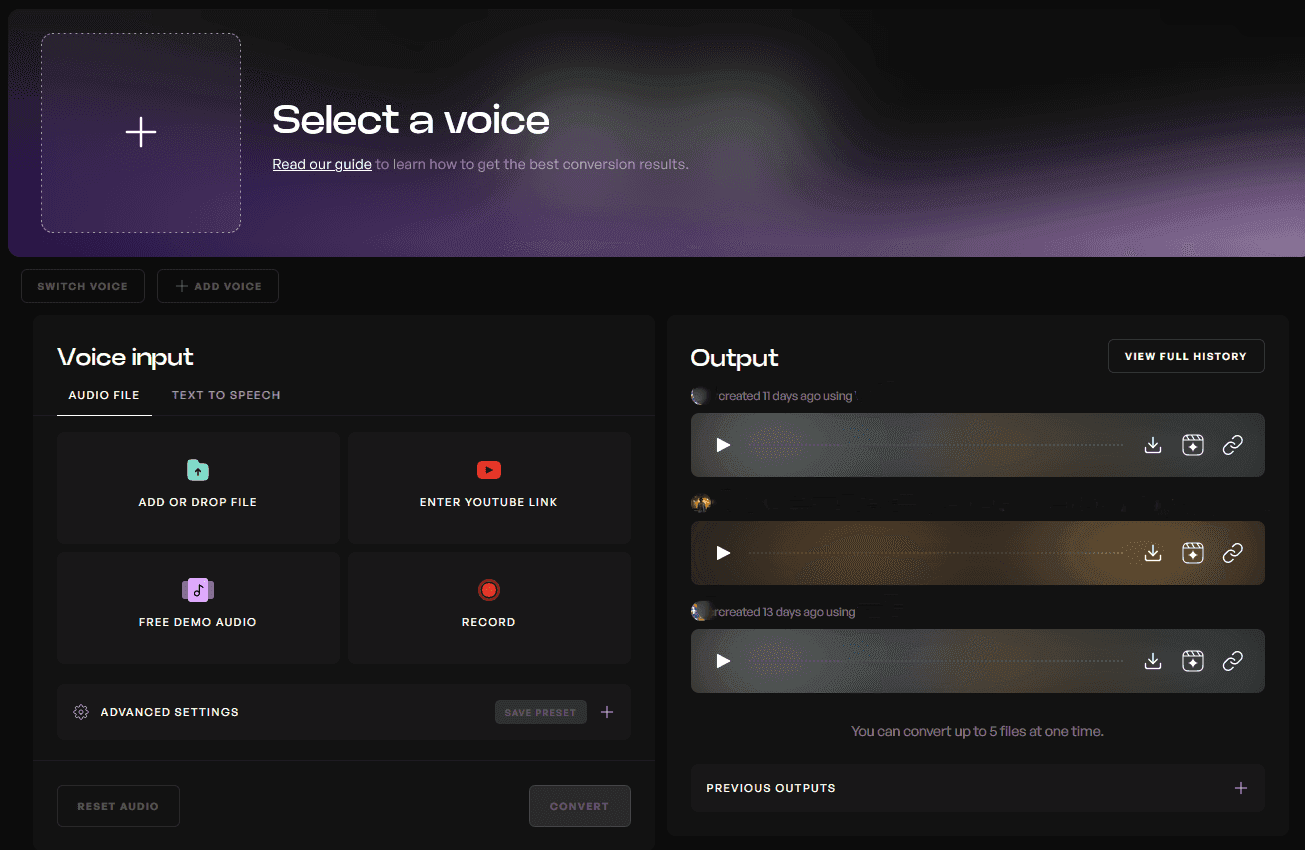
Selecting the Right AI Voice for Rock Music
Choosing the correct AI voice is crucial for authenticity, especially in a genre as expressive as rock. Kits AI provides a range of models, including 'Male Strained Rock' to reproduce the gritty and intense vocals typical of the style. Some other voices specialized for rock include the Male Gritty Pop and Male Rock and Roll voices.
For best results, it's recommended to record the original vocals in a manner that complements the chosen AI model—singing in falsetto with a strained voice could enhance the model's performance, ensuring the AI-generated voice carries the right energy and emotion for a rock track.
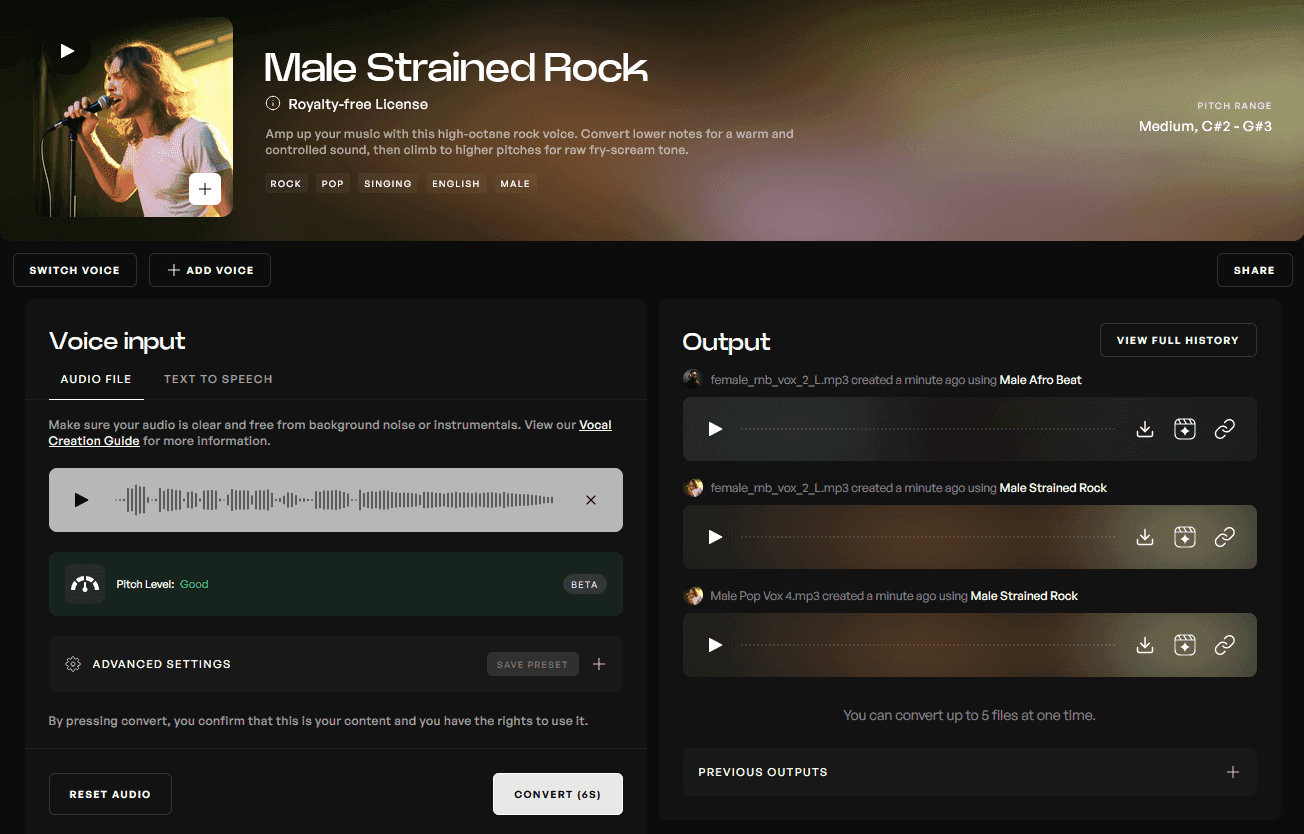
Fine-Tuning the Initial Settings
Before the conversion, it's essential to tweak the settings to get the cleanest AI vocal possible. Kits AI allows users to adjust parameters to suit their specific needs, ensuring that the voice conversion process captures all the nuances of the intended performance. Paying attention to these settings can make a significant difference in the output quality, bringing the AI vocals closer to a naturally recorded performance.
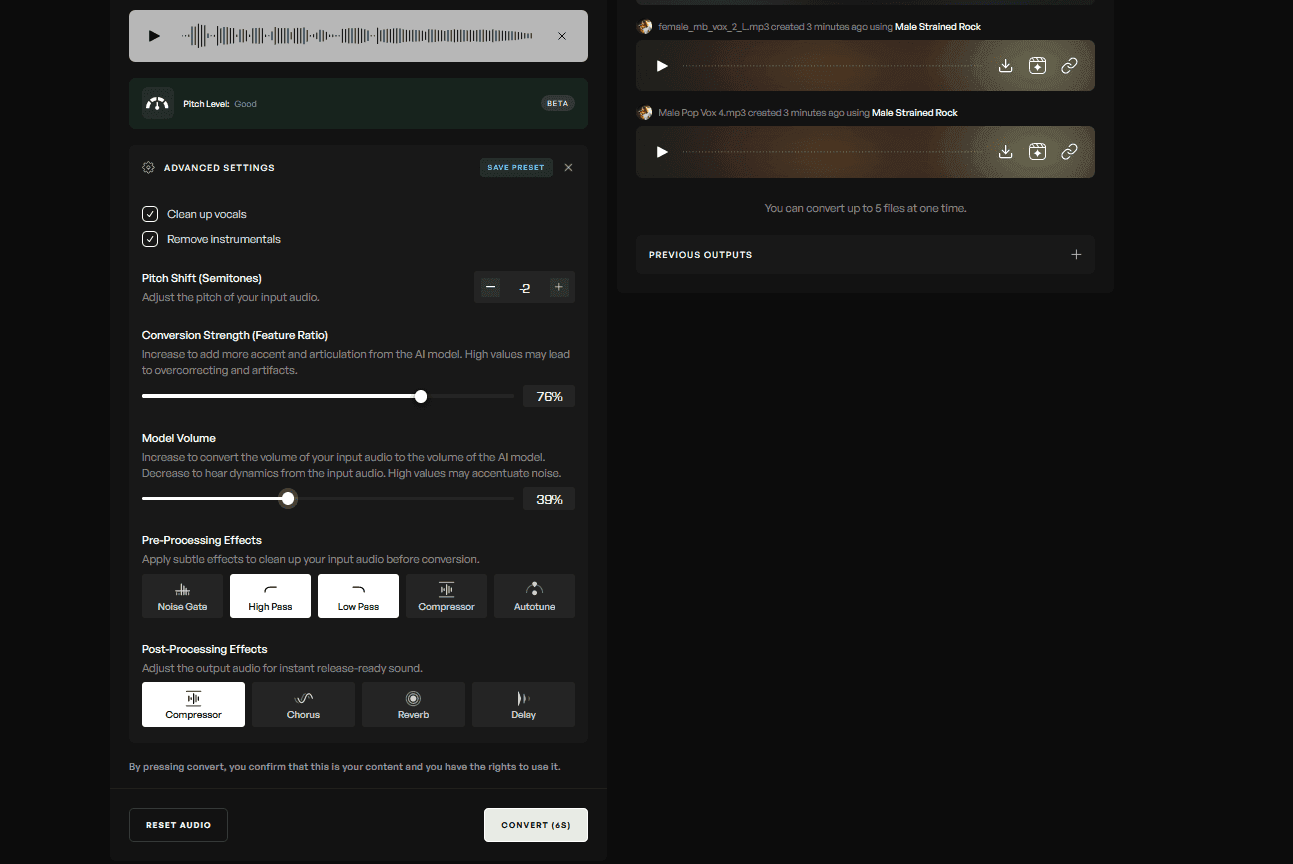
Processing the AI-Generated Vocals
Post-conversion, the AI vocals might require some refinement to fit seamlessly into a rock mix. This is where processing comes in, using software suites to tame any harsh frequencies and provide the necessary clarity. Each adjustment in this phase is about polishing the raw AI vocal to meet the standards of a professional rock production.
Enhancing the Vocals with Compression and Effects
Compression is the next step, vital for giving the AI vocals a consistent and aggressive presence. This is especially true for rock music, where vocals need to cut through dense instrumentation. Applying effects is also part of this stage—EQ adjustments bring the vocals to the forefront, while reverb adds depth, and saturation introduces warmth and character. Each effect contributes to the overall feel of the track, ensuring the AI-generated vocals are not just heard but felt.
With these steps, the foundation for a rock track with AI vocals is set. But the process doesn't end here. The following sections will delve deeper into finalizing the AI vocal track, ensuring it blends perfectly with the music, and exploring additional enhancements and considerations for making rock music with AI.
Finalizing the AI Vocal Track
After the AI vocals are processed and enhanced, the final stage is critical: ensuring they harmonize with the existing rock composition. The vocals must not only be technically sound but also emotionally resonant with the music. Small tweaks, such as adjusting the levels or panning, can make a substantial difference, ensuring the vocal sits just right in the mix.
If any elements of the vocal performance don't quite fit, now is the time to make those final adjustments. This could involve revisiting earlier steps, like re-tuning the EQ or modifying the reverb settings, to perfect the sound.
The Future of Rock Music with AI
The use of AI in music production is a burgeoning field with immense potential. For rock musicians and producers, AI vocals can be a game-changer, providing a powerful new tool for creative expression. As technology continues to evolve, we can expect the process to become even more seamless, empowering more artists to bring their unique visions to life. With platforms like Kits AI leading the charge, the future of rock music is set to be as dynamic and innovative as the genre itself.
By harnessing the capabilities of AI, musicians can explore uncharted sonic territories, creating rock anthems that resonate with audiences while reflecting the spirit of the times. The key to success lies in the skillful blending of technology and artistry—where the machine provides the tools, but the human touch directs the creativity. As musicians continue to embrace AI, the rock genre will undoubtedly evolve, but its core—the raw, emotive power that defines it—will undoubtedly remain.



